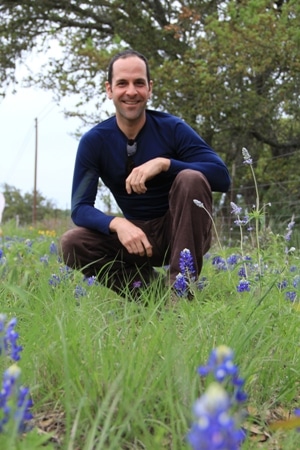Jul 1 2016
Different responses to climate change by females and males of the same plant species could have long-lasting consequences not only for the plant but also for organisms that depend on it, according to Rice University ecologist Tom Miller.
 Tom Miller (Credit: Rice University)
Tom Miller (Credit: Rice University)
As Earth’s climate warms, some species are likely to seek higher ground. Valeriana edulis, a flowering herb found in the Rocky Mountains, is one of them – but the females move faster than the males, which apparently aren’t as bothered by hotter, drier conditions.
This creates an imbalance between the sexes that could have a long-term impact on Valeriana edulis, Miller said.
The findings by a University of California, Irvine-led team that includes Miller are the product of an analysis of population data about the plant that spans more than three decades.
Miller said the results presented in Science today show the very real impact of climate change on a species by detailing how the plant has kept pace with shifts in precipitation and soil moisture. Of particular interest is that the sexes differ in how they handle changing conditions, perhaps even endangering their survival.
“This is not a case of suddenly seeing something marching up the mountain,” Miller said. “It’s subtler than that. The species is changing in composition a lot faster than it’s moving geographically.”
The study was led by UC Irvine’s Kailen Mooney and William Petry, who, like Miller, are associated with the Rocky Mountain Biological Laboratory in Crested Butte, Colo. The researchers maintain that the species’ trait shift – the change in its characteristics over time – is more striking than the observed range shift, which tracks its physical location.
The real revelation, Miller said, is in how climate change alters the dynamic between the sexes because of their inherent differences.
“The idea that males and females can be different in important ways goes back to Darwin,” he said. “Biologists have appreciated that for a long time. But there’s another step to understanding the role of both sexes in population dynamics and population viability, and that goes to their dependence upon one another for mating. You only get males from females, and you can’t have females producing males without other males to fertilize them.
“These are all obvious, and yet the way biologists have studied population viability for a long time, maybe almost forever, has been to ignore males. If you just have a cohort of females and you understand the rate at which they survive and grow and reproduce, then on average, males just kind of come out of the wash. You can make some assumptions.”
But not always, he said. “There are some conditions where it’s a really bad assumption, like when you have environmental gradients (like a mountainside) in which males and females perform differently. It’s not sufficient for environments to become more favorable for females alone, because they can find themselves mate-less.
“So there’s an interesting dynamic that has to be accounted for in predicting how populations shift their ranges. If males and females differ in the niches they fill, as these data suggest, then that’s another layer of complexity we need to account for in forecasting how species respond to climate change.”
Miller said mountains “are really powerful biological laboratories for understanding climate change. When you go up or down a mountain, you’re also moving in time, because projections for climate change map onto how the environment changes with elevation. What we found was a parallel change in the sex ratios of these plants as they go up the mountain.”
The study’s backstory is remarkable as well, Miller said. “(Lead author Will Petry) basically stumbled upon a 30-year-old thesis in the library of the Rocky Mountain Biological Lab in which somebody had actually measured sex ratios of these plants in the 1970s,” he said. “Will realized it was an opportunity to time travel a bit, to go back to those places and see how they’re doing now.”
The author of the 1981 thesis, Judith Soule, then a graduate student at the University of Michigan, is a co-author of the study, which relies on her historical data.
Miller said the work has already prompted a closer look at the arthropods that dine primarily on female Valeriana edulis. “The study is the start of documenting how the effects on a single species affect other species in these communities. There’s likely going to be cascading effects, and we’re just scratching the surface of that.”
Co-authors of the paper are postdoctoral researcher Amy Iler of Aarhus University, Denmark, and the University of Maryland; Ana Chicas-Mosier of Oklahoma State University; and David Inouye, a professor emeritus at the University of Maryland. Miller is the James and Deborah Godwin Assistant Professor of Ecology and Evolutionary Biology at Rice.